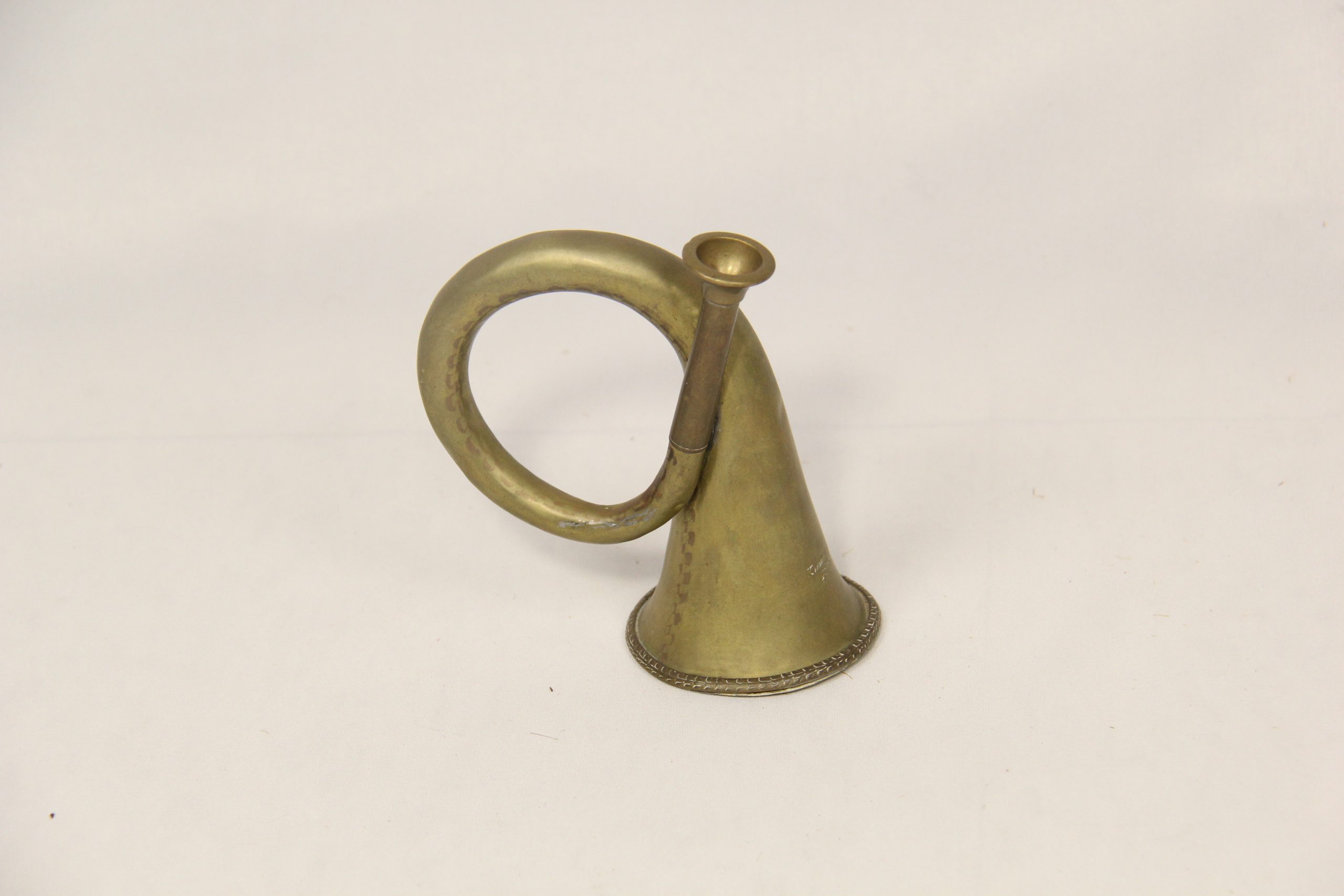Cornet in B-flat with A bit
Details
- Origin: Worcester, MA
- Date: 1873-87
- Maker: Isaac Fiske
- Collection: E 283
Description
Fiske string-type, top action, rotary valve mechanism at right of bell tube. Made of German silver, 0.4 mm thick at bell.
The A-bit is in the mouthpiece tube. A lyre holder is at middle of first bend. The water key is at the bottom of the bend. The tube enters the third valve and exits the first. The valve push-rod cases have a rod soldered around their base, which is connected at its ends to the exit tube and the first-valve tube.
This B-flat cornet by Fiske utilizes the 1867 patent invented by Fiske himself. The 1867 patent was a method of forming curved tubes and crooks from one piece of sheet metal. Fiske took out two patents in 1873 for improvements in windways. One of the 1873 patents was for an arrangement of the valves to eliminate as many bends as possible in the windway. The date of this cornet is between the date of the 1873 patent referred to and Fiske’s selling out in 1887 to C.G. Conn.
Fiske was noted as an inventor in methods of production for forming tubing and worked to improve valve action and develop clear windways, receiving five US patents.
Regarding Fiske’s impressive career, Pablo Diaz Ramos writes the following:

“Isaac Fiske, from Holden MA, was an excellent maker of brass musical instruments. He had an inventive personality and sought to solve several of the problems of brass instruments at the time. Fiske’s reputation as a fine maker of brass instruments had spread far beyond local Worcester. Allen Dodworth, a famous band leader in New York City, congratulated Fiske on his innovations and pointed them out in his concerts and acts. He became “a maker of deserved celebrity.”
While a B-flat cornet looks similar to a trumpet, they have a whole other rich and unique tonal sound to them. The Bb cornet operates exactly the same as a trumpet but has a “ conical bore, added valves, a different timbre and a much mellower tone” [2]. Because of this, a Bb cornet sounds great when paired with trumpets in an orchestra or jazz ensemble, as it helps round out the more piercing sound of the trumpet. Even played without accompaniment, a cornet still has a great appeal to all fans of brass instruments. The cornet itself was invented in 1820s France as a valved version of the post horn. The instrument was an instant success and quickly supplanted keyed bugles as an audience favorite.
Sources
- The Met Museum. “Courtois Fréres | Cornet à Pistons in B-Flat.” Metmuseum.org. Accessed June 17, 2022. https://www.metmuseum.org/art/collection/search/503546#:~:text=Cornet%20%C3%A0%20Pistons%20in%20B%2Dflat%201833&text=The%20cornet%20was%20invented%20in,as%20a%20favorite%20among%20audiences.
- “Bb (B Flat) Cornets | Musician’s Friend.” 2022. Musiciansfriend.com. 2022. https://www.musiciansfriend.com/bb-cornets.
- “Cornet: ‘Circular’- Isaac Fiske – Hartenberger World Musical Instrument Collection.” 2021. Hartenberger World Musical Instrument Collection. April 12, 2021. https://wmic.net/cornet-circular-isaac-fiske/
- Ramos, Pablo Diaz. “Musical Jubileein the – Instrumentaleagle.org.” Accessed June 17, 2022. http://www.instrumentaleagle.org/wp-content/uploads/2017/08/Isaac-Fiske.pdf.



